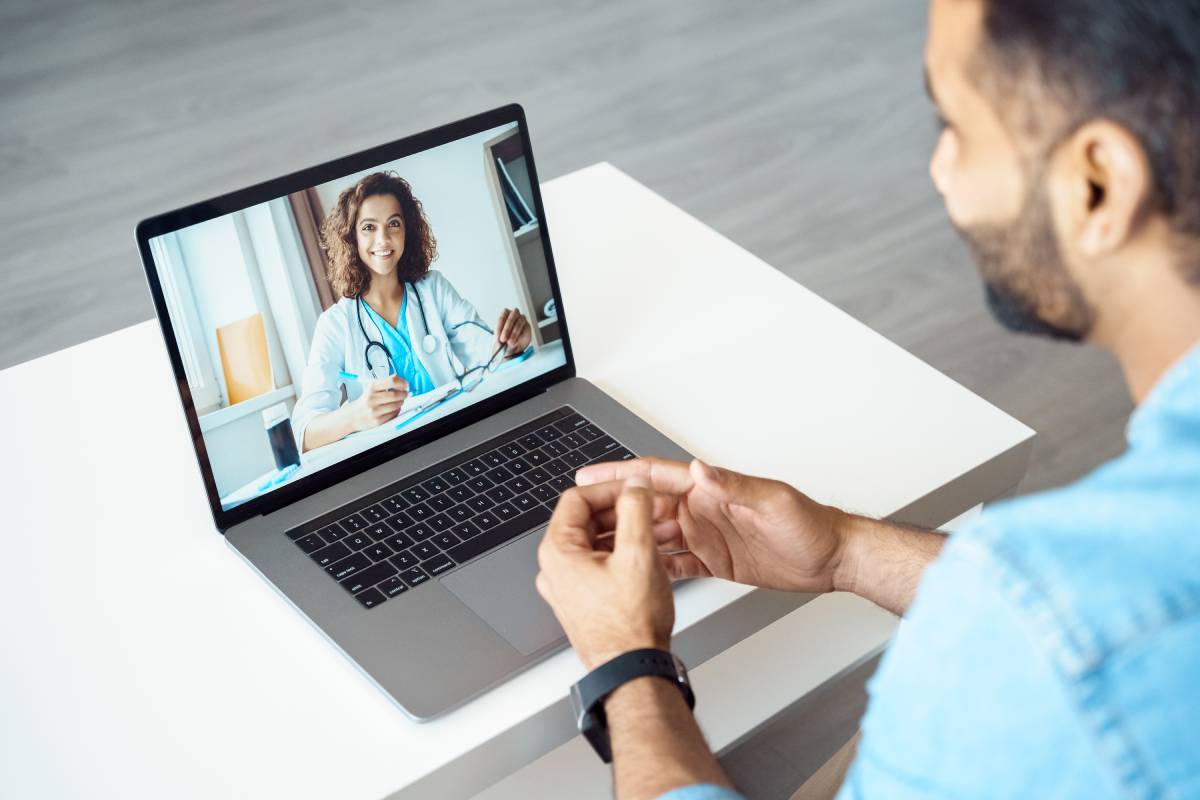Virtual Pre-Anesthesia Evaluations

A preoperative assessment is a standard evaluation, traditionally carried out in person, for patients who will undergo a procedure involving anesthesia. However, there has been greater movement towards reducing the burden of in-person examinations and conversations for patients where possible. Since the early 1990s, telehealth has been increasingly widely accepted, providing both cost and safety benefits 1. Given the increased adoption of virtual care during COVID-19 pandemic, it is now more timely than ever to consider virtual pre-anesthesia evaluations.
Virtual pre-anesthesia evaluations must, of course, not be inferior to the in-person version to be a viable option. A recently conducted systematic review has revealed that a virtual preoperative assessment resulted in similar surgery cancellation rates compared to an in-person evaluation, yielding a pooled cancellation rate of 2%. Furthermore, most studies documented a positive patient experience, yielding a pooled estimate of 90%. Finally, there was a high success rate in using virtually collected information, ranging from 92-100%, to diagnose and manage patients. This generated time and cost savings ranging from 24-137 min and $60-67 per patient 2.
Additional research has confirmed that virtual pre-anesthesia evaluations not only result in high patient satisfaction rates, but time and cost savings as well compared to in-person evaluations. These data point to the distinct advantages of telehealth in remote and rural areas where access to healthcare can be difficult 3,4.
A recent study studied what kinds of patients were best for virtual assessments. The research identified that patients who were 65 years of age or older, individuals currently on 7 or more medications, and patients with diabetes could be scheduled for a face-to-face evaluation, while others could be scheduled for a telemedicine visit 5.
Of increasing relevance in today’s virtual landscape, investigators have sought to assess how virtually shared information might be protected under the Health Insurance Portability and Accountability Act 6. In this context, how these data would be incorporated into medical records remains a top concern. Telehealth licensure needed addressing, along with professional liability and patient privacy issues, among others 1. The American Telemedicine Association Accreditation Program has recently attempted to address these challenges by establishing criteria surrounding the security of patient information, developing clinical practice guidelines and addressing required licensing provider qualifications 7.
Medicare continues to promote cost-effectiveness and high-quality care in remote patient monitoring by heavily leveraging telehealth, and in 2016, the Senate Finance Committee released a proposal for healthcare providers to receive Medicare payments for telehealth services 8. Meanwhile, in 2017, the Federation of State Medical Boards, along with the Interstate Medical Licensure Compact, officially announced that applications to practice telehealth across state borders were available for interested healthcare providers.
Technology and healthcare continue to advance at breakneck speed, and healthcare is increasingly dependent on the newest technology. Telehealth may be a useful tool to deliver high-quality care in a timely, effective, and cost-effective manner—and in this context, will continue to play an increasingly prominent role in healthcare. It has potential applications in many areas of medicine, including anesthesiology, through virtual pre-anesthesia evaluations.
References
1. Rollert, M. K., Strauss, R. A., Abubaker, A. O. & Hampton, C. Telemedicine consultations in oral and maxillofacial surgery. J. Oral Maxillofac. Surg. (1999). doi:10.1016/S0278-2391(99)90226-4
2. Zhang, K., Rashid-Kolvear, M., Waseem, R., Englesakis, M. & Chung, F. Virtual preoperative assessment in surgical patients: A systematic review and meta-analysis. Journal of Clinical Anesthesia (2021). doi:10.1016/j.jclinane.2021.110540
3. Zetterman, C. V., Sweitzer, B. J., Webb, B., Barak-Bernhagen, M. A. & Boedeker, B. H. Validation of a virtual preoperative evaluation clinic: A pilot study. in Studies in Health Technology and Informatics (2011). doi:10.3233/978-1-60750-706-2-737
4. Fishman, M., Mirante, B., Dai, F. & Kurup, V. Patient preferences on telemedicine for preanesthesia evaluation. Canadian Journal of Anesthesia (2015). doi:10.1007/s12630-014-0280-0
5. Khera, K. D., Blessman, J. D., Deyo-Svendsen, M. E., Miller, N. E. & Angstman, K. B. Pre-Anesthetic Medical Evaluations: Criteria Considerations for Telemedicine Alternatives to Face to Face Visits. Heal. Serv. Res. Manag. Epidemiol. (2022). doi:10.1177/23333928221074895
6. Dilisio, R. P., Dilisio, A. J. & Weiner, M. M. Preoperative virtual screening examination of the airway. J. Clin. Anesth. (2014). doi:10.1016/j.jclinane.2013.12.010
7. Wood, E. W., Strauss, R. A., Janus, C. & Carrico, C. K. Telemedicine Consultations in Oral and Maxillofacial Surgery: A Follow-Up Study. J. Oral Maxillofac. Surg. (2016). doi:10.1016/j.joms.2015.09.026
8. Role of Telehealth in Pre-anesthetic Evaluations – Nurse Anesthesiology. Available at: https://nurseanesthesiology.aana.com/role-of-telehealth-in-pre-anesthetic-evaluations. (Accessed: 5th February 2023)
